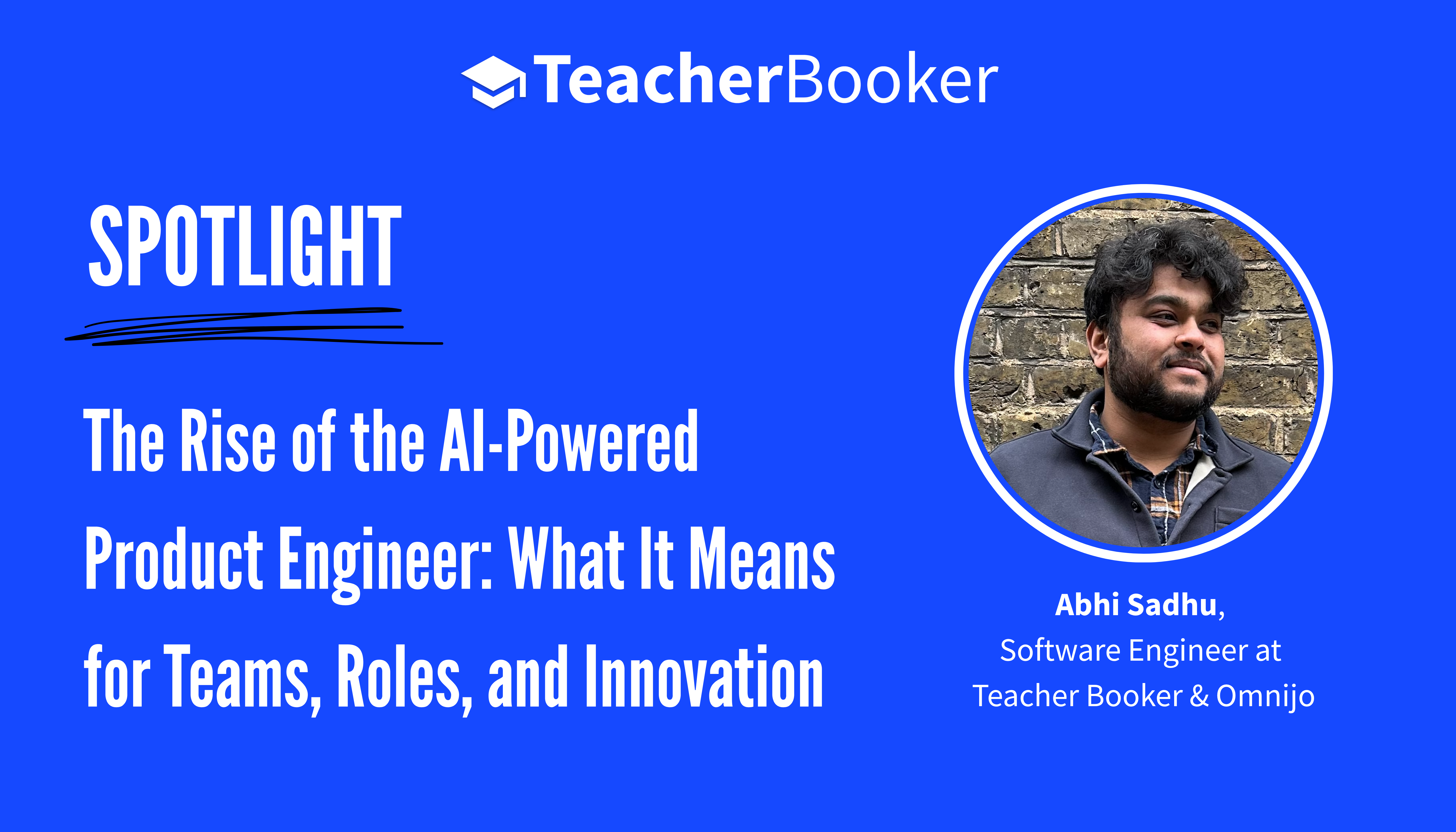At Teacher Booker, we’re passionate about applying cutting-edge technology to help schools and educators thrive. As part of our ongoing exploration into how AI is transforming the way we build products and deliver value, we asked Abhi Sadhu, one of our talented software engineers, to share his thoughts on where things are heading.
What follows is a thought-provoking perspective on how artificial intelligence is reshaping not just the tools we use, but the very nature of software development teams, roles, and user expectations. Whether you’re deeply technical or just curious about how AI is driving the future of work, this piece provides a glimpse into where things are going — and what it takes to stay ahead.
What are the core “languages” being used?
Natural language is becoming the dominant interface. Traditional coding languages are gradually fading into the background, as AI becomes more capable of translating human intent into executable code. However, understanding software infrastructure and system design remains critical in order to guide and shape the behaviour of AI effectively.
What roles will be important in the future?
Roles like Team Leads and 10x Product Engineers will gain prominence. These individuals are not just coders. They understand the business, communicate directly with stakeholders, design solutions, build, test, and deploy them. They are end-to-end owners of a product or feature. This kind of hybrid role, supported by AI tools, will be the cornerstone of high-performing teams.
How might your own role change in the coming years?
I’m evolving toward becoming one of these all-encompassing Product Engineers. The goal is to own problems fully — from understanding the business context to deploying and maintaining solutions — with minimal overhead from management or fragmented responsibilities. Skills I’ll double down on include problem-solving, system thinking, product sense, and leveraging AI as a co-pilot. What may become obsolete is traditional specialisation and reliance on large, rigid team structures.
What excites me is the increased autonomy and creative control. What scares me is the speed of change: staying relevant will require continuous learning and adaptation.
How do you see team structures evolving?
The traditional team structure — split across front-end, back-end, QA, design, product management — is starting to dissolve. With AI handling much of the heavy lifting, smaller, more autonomous units or even individuals will handle entire products. A new archetype is emerging: the self-sufficient builder who can do it all with the help of intelligent tools.
How are customer/user expectations changing?
User expectations have skyrocketed. They now expect fast, high-quality updates, seamless UX, and AI-integrated experiences as the norm, not the exception. The pace of innovation has shifted from incremental to exponential. If you’re not using AI to enhance velocity and quality, you’re falling behind. There’s no room for mediocrity. Users are no longer willing to tolerate slow, clunky, or outdated experiences.
The Bottom Line
At Teacher Booker, we’re embracing this new era of intelligent tools and empowered engineers. We believe the future belongs to agile, full-spectrum thinkers who can blend product intuition with technical execution — and who aren’t afraid to partner with AI to move faster and smarter.
As the education sector evolves, we’ll continue to harness these innovations to better serve schools, teachers, and students — staying ahead of the curve, while staying grounded in what matters most: human impact.

